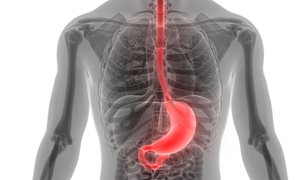7 April 2017
However, the role of screening and surveillance in patients with Barrett's oesophagus remains controversial. The use of novel endoscopic techniques and biomarkers combined with better identification of high-risk groups could improve the effectiveness of screening and surveillance in BE patients. Besides, combined with effective endoscopic treatment for dysplasia and early staged cancer, it could help reverse the increased incidence of EAC and reduce its mortality.
In order to achieve this, we aim to improve screening by characterizing a well-defined high risk population and to assess the population-at-risk in the Netherlands. Furthermore, we will test an electronic nose device, as a new non-invasive and less costly screening tool for BE. Second, surveillance strategies for BE and their effect on malignant progression will be analyzed, in order to optimize surveillance and follow-up strategies. At last, we will study the possibility of probiotics to reduce the inflammation and thereby the risk of neoplastic progression in BE by influencing the esophageal microbiota.
 As the incidence of esophageal adenocarcinoma (EAC) and its precursor Barrett’s esophagus (BE) has increased dramatically during the last decades, strategies to counter this need to be explored.
As the incidence of esophageal adenocarcinoma (EAC) and its precursor Barrett’s esophagus (BE) has increased dramatically during the last decades, strategies to counter this need to be explored.
However, the role of screening and surveillance in patients with Barrett's oesophagus remains controversial. The use of novel endoscopic techniques and biomarkers combined with better identification of high-risk groups could improve the effectiveness of screening and surveillance in BE patients. Besides, combined with effective endoscopic treatment for dysplasia and early staged cancer, it could help reverse the increased incidence of EAC and reduce its mortality.
In order to achieve this, we aim to improve screening by characterizing a well-defined high risk population and to assess the population-at-risk in the Netherlands. Furthermore, we will test an electronic nose device, as a new non-invasive and less costly screening tool for BE. Second, surveillance strategies for BE and their effect on malignant progression will be analyzed, in order to optimize surveillance and follow-up strategies. At last, we will study the possibility of probiotics to reduce the inflammation and thereby the risk of neoplastic progression in BE by influencing the esophageal microbiota.
-
Want to know more about these subjects? Click on the buttons below for more news.
Related news items

Electronic nose smells precursor of oesophageal cancer
5 March 2020 A portable electronic nose can effectively detect precursors of oesophageal cancer, reported by RIHS researchers Yonne Peters and Peter Siersema in the medical science journal GUT. This was demonstrated in an initial study involving more than four hundred patients. read more
Vote for the Supervisor of the year
12 December 2019 Deadline for voting is closed. The three nominated finalists are: Joost Drenth, Marien de Jonge and Iris Nagtegaal. read more
Mohrmann Stipend for Bakker and Peters
12 December 2019 Tuesday 10 December, Esmée Bakker and Yonne Peters were awarded a Christine Mohrmann stipend. The grant – 5000 euros each – gives them an opportunity to spend time at another university, preferably one abroad. read more
Electronic nose detects bacterium that can cause stomach cancer
10 September 2019 OP Oost promotes innovative cooperation between companies and research institutions. read more
Barrett oesophagus
6 June 2019 In Nature Reviews Disease Primers Yonne Peters and Ali Al-Kaabi provided a global overview of Barrett oesophagus and outlined key open research questions. This primer covered epidemiology, disease mechanism, diagnose, screening, prevention, management, and quality of life. read more
